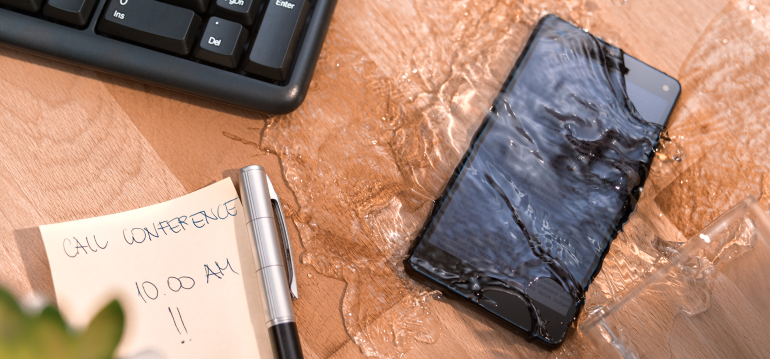Work devices were hastily loaded into cars last year as employees were told to work from home, with many yet to return to the office since. With devices brought into bedrooms, living rooms and kitchens, the potential for accidental splashes and spills increased, particularly as teas, coffees and other beverages were placed on makeshift desks.
One home insurer reported a 35 per cent increase in claims in September 2020 compared to the same period in 2019, with spillage proving to be the cause of 22 per cent of accidental damage claims in January 2021. To gain a clearer picture how this trend will develop as Covid-19 restrictions ease, it’s vital to look at shifting attitudes towards remote working post-pandemic.
Why remote working is set to stay
During a year of uncertainty, one aspect that we can be sure of is that remote working is set to stay in at least some form for the majority of businesses. Research has found that around three in ten businesses expect that more than 70% of their employees will be working remotely in the next two to three years, which is a rise from just one in ten before the pandemic hit.
But with this development comes the increased risk of spillages, particularly in the case of shared desks that may be unstable or not fit for purpose in comparison to office furniture. Accidental spillages are already well-recognised by the industry, with a P2i survey revealing that 49% of respondents see it as a key risk factor, but what actions can manufacturers take to protect devices?
The technology behind Splash-proof
P2i’s Splash-proof solution is an ultra-thin, hydrophobic and oleophobic nanocoating that is applied to the whole device. This enables it to achieve between IPX1-3 rating, meaning the device is then protected against condensation, dripping and water sprays. The resultant hydrophobic layer reduces liquid ingress by up to 95%, which occurs due to the gaps and holes in the device, combined with the scientific phenomena of capillary action of the spilt liquids.
To further understand how capillary action works, it’s important to understand the adhesive and cohesive tendencies of liquids such as water. Adhesive tendencies refer to the fact that its molecules are attracted to substances unlike themselves, which is why the edges of water curve upwards when it is poured into a glass beaker. Cohesive tendencies refer to the fact that its molecules are attracted to each other. Surface tension is created in liquids when its molecules exhibit stronger attractive forces to the molecules next to and below them due to the absence of other molecules above.
With this in mind, if a glass tube is placed inside a beaker of water, the water would adhere to the glass tube and rise up its surface due to its adhesive tendencies. For a very small tube (e.g diameter less than 0.5 mm when the liquid is water and the tube is glass) the combination of surface tension and adhesive forces of the liquid, lead the level of water to rise higher inside the tube than inside the beaker. This is capillary action. The narrower a tube, the greater the capillary action and the higher the liquid rises. This allows liquid to be drawn into a device in the case of spillage and causes greater damage if not protected against.
A single process to achieve protection
Not only does Splash-proof prevent capillary action taking place, but also reduces the chance of corrosion, significantly improving device reliability and resilience in adverse environments. So while work devices continue to be at risk from liquid damage while situated at home, P2i’s Splash-proof technology protects all device components with a single process, making devices resilient from liquid damage. Accidents can happen, but manufacturers can take preventative action in protecting electronic devices to effectively mitigate the risk that liquids can pose.
To speak to one of our team to find out more about our splash proof liquid protection technology, please contact us.

